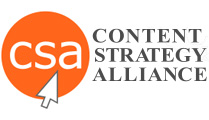Content strategy has two aspects, but which is the most important?
By Steven Grindlay
I’ve heard content described more than once as the stuff of communication. I agree. It makes good sense. If not content then what else would communication be constructed from? If we accept this as true, then it must also be true that wherever there is communication there must also be content
OK , so let’s agree then,
Content is the stuff of communication. Strategy on the other hand, is the thinking and planning with the intention to shift or reposition something from a present condition or state to a more desirable future state.
Taken together, we could say that content strategy means:
- The use of content to create a strategy that shifts the organization’s communication from a present state to a more desirable future state.
OR
- A strategy to shift content from a present state, to a more desirable future state.
In fact, content strategy is both.
Both are vital; they are the different yet complimentary sides of the same coin, the two wings of the same bird. If either are neglected our content strategy is pointless and it will fail.
At first glance the difference seems subtle, but they’re really worlds apart.
The first meaning is about strategic intent. How can content strategy help companies become or remain more competitive, who should they be talking to, what should they be saying and what results can they hope to expect?
The second one is about an executional strategy and managing the content life-cycle. Things like: assessing the content we have, deciding what content we need and how will we create it; how, when and where do we publish and promote it, measure its success; and finally, when do we retire it?
We content strategists are often guilty of overemphasizing the executional strategy of CS, becoming a bit too fascinated with our process, tools and templates. Often at the expense of the bigger picture.
At times it’s a bit like watching a group of craftsmen having an animated discussion about how wonderful their tools are. One claims his hammer is better than someone else’s, another insists they have the better measuring stick. Pointless debates arise about who’s the better bricklayer, carpenter, foreman etc. Completely lost from sight, is the original purpose. Building the Taj Mahal.
The building is impressive.
The tools are not, the debate even less so.
Nonetheless the tools are essential. The processes of content strategy the nitty-gritty details that get it done and put it in front of the intended viewers’ eyes shouldn’t be underestimated. After all no matter how compelling the vision, you can’t travel to the moon if you don’t know how to build and fly a rocket ship.
I believe we’re past that point we’ve nailed the rocket science completely. I think the problem facing content strategy today, is not finding a better template, a new tool or process for executing procedures. The really thorny issue is how we’re going to initiate a conversation in boardrooms and the executive suites of big business —or even, not-so-big business? What are we planning to say to them and why would they want to listen? What problems are we solving?
What compelling message is it that content strategists need to deliver to get business managers to sit up and pay attention? I’m not talking about a slick, roll-off-the-tongue content strategy definition here; I’m talking about how organizational conversations can be shaped to meet objectives.
Business management want to be impressed. They’re looking for content strategists to show them a vision, to step up and identify and lead a strategic initiative that helps them solve difficult problems in a complicated business environment. They want to know what to say and whether it’s worth saying, and who to say it to. They want a compelling story, the majestic palaces, and the vision to become real. They want to shine.
And they want it delivered in an executable, effective, measurable, cost-efficient plan that elevates, distinguishes and differentiates their organizations and its products in the minds, hearts and wallets of the marketplace.
In my opinion, that’s our job.
Steven
As usual the thoughts and opinions are mine and mine alone and they do not necessarily reflect the views of the Content Strategy Alliance.
Image Credit: The god Janus on a Roman coin. http://www.khm.at Public domain

